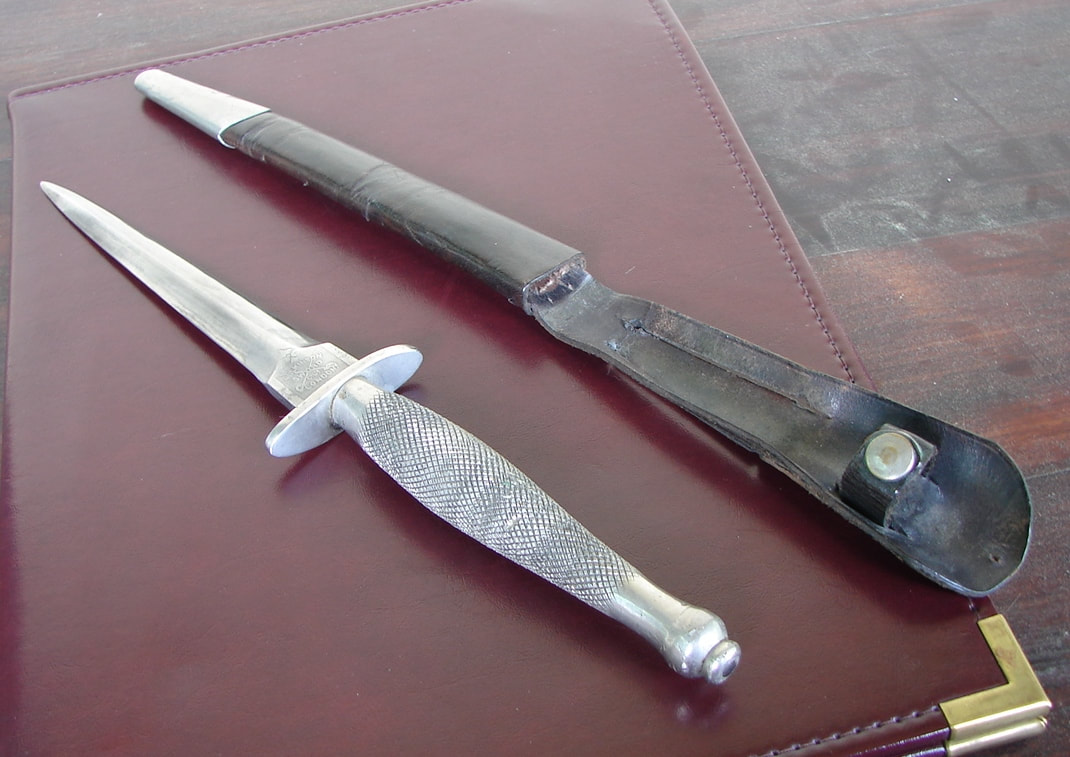Back in the 1970s when I first began collecting F-S knives there was no internet and therefore no email. How many of you can imagine life before the internet? I bought one of my earliest World War Two First-Pattern Wilkinson knives via a land-line phone and snail-mail from a small knife shop a continent away. This knife came from way out in Oregon. My purchase was based on a tiny photo in a magazine called “Fighting Knives[1].” In the photo the shop-owner was holding two knives. I had to use a magnifying glass to identify the knives because the whole photo was not much bigger than a postage stamp! Despite the seller’s assertions that it was an original World War Two Wilkinson First Pattern knife I was skeptical. My skepticism was based on the fact the seller’s asking price was too low. Finally I decided that even if the knife was a post-war reproduction by Wilkinson it was still worth his asking price. I sent him a check for one hundred and twenty five dollars (no Paypal™ back then either). I will long remember that cold Christmas morning, opening the mailing tube with trepidation, and being greeted by that reassuring smell of aged leather and musty steel. Damned if it wasn’t a genuine World War Two Wilkinson First-Pattern knife worth approximately nine hundred dollars at the time. The moral of this story is, if you are a dealer, and a collector questions what you are selling, be nice to him and maybe he will explain that what you have to sell is more valuable (or not) than you think. Another tip is do not use knife collecting price guides twenty years out of date. We have steadily added to our collection of First Pattern knives since buying that one, but none so cheaply as that one from Oregon.
[1] “Fighting Knives” was published by Larry Flint with Greg Walker as editor. In my opinion it was the finest magazine ever published on the topic.


 RSS Feed
RSS Feed
